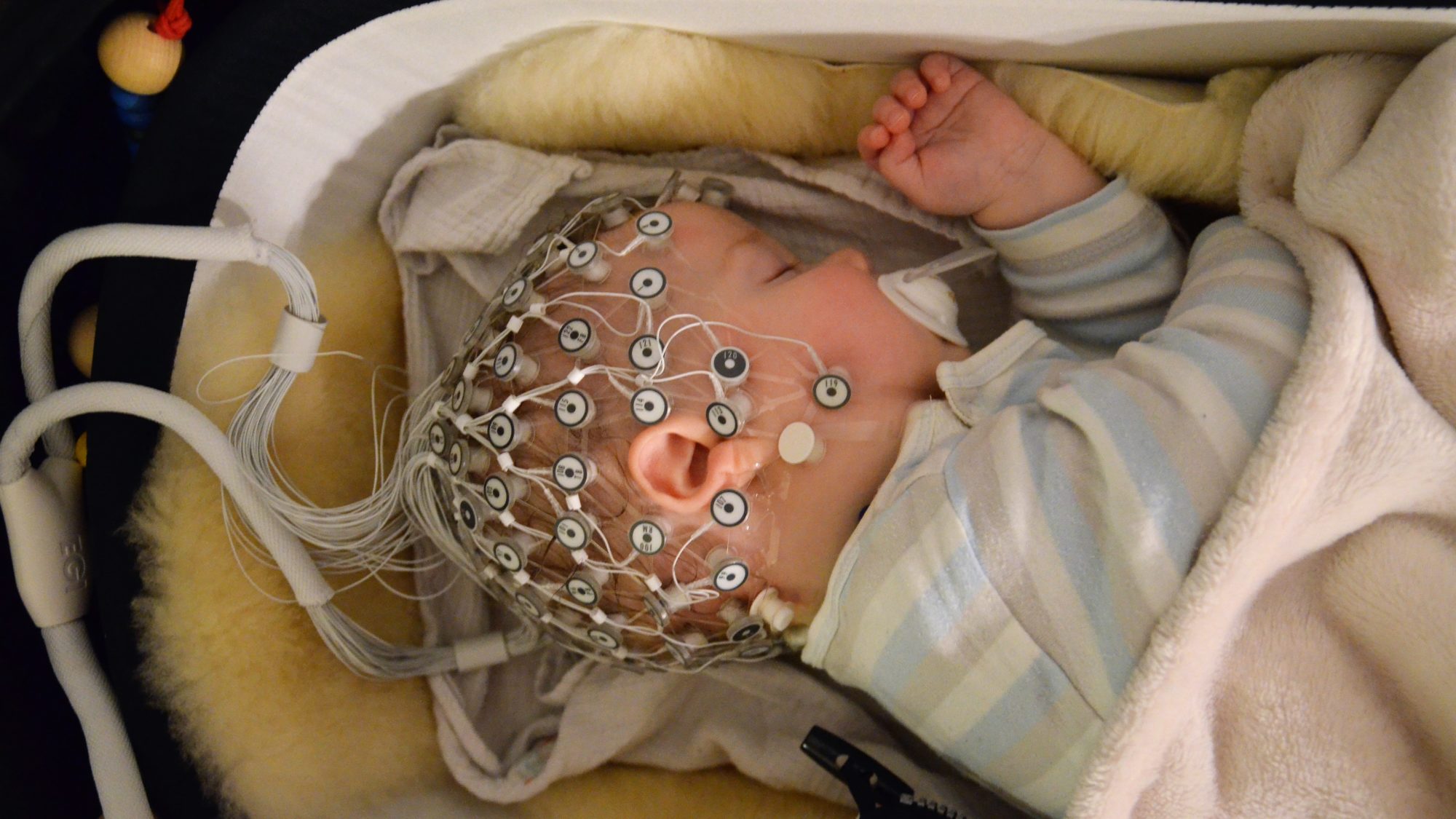Text by Sarah Schoch and Salome Kurth, translated by Lea Arigoni
Below you will find information about the research methods we use in the Baby Sleep Lab.
Sleep environment
Our assessments take place at the families’ homes. We wish to measure sleep as normally as possible, and a familiar environment is important for this.
Motion sensor / Actimeter
In our studies we need movement sensors (=actimeters) to draw conclusions about the sleep-wake rhythm. This method is based on the fact that movements during sleep are reduced and less frequent compared to the waking state. The movement sensor therefore indirectly measures sleep. Conclusions from actimetry can be complex, especially if there is external movement during sleep, for example when the baby is sleeping in a pram or sling. Therefore, as a supplement to the actimeter, a sleep diary is also kept, where the child’s sleep periods, as well as its eating and crying, are reported.
We use the actimeter from Geneactiv, which is small (43 mm x 40 mm x 13 mm) and light (16 g). The actimeter is attached to the child’s left leg. We have modified baby socks so that the actimeter is placed in a small pocket on the outer side of the ankle.



Gut bacteria from stool
Gut bacteria can be analysed from a regular stool sample. To do this, parents fill stool from diapers into a sterile test tube. Parents receive a package from us with the necessary utensils (spatula, pipette, gloves, inserts for diapers and test tubes). It is important that the sample is kept well sealed in the refrigerator until we come to pick it up (as soon as possible!) and bring it to the laboratory.

Electroencephalography (EEG) assessment
In some studies, we measure sleep with a portable EEG. The EEG measures brain activity during sleep, which remains inaccessible with the actimetric motion sensor.
We apply a sponge net with 124 electrodes for a duration of 2 hours. This cap detects the electrical signals the baby’s brain itself produces during sleep. This assessment will be conducted by our experienced study team and also takes place at the families’ homes.
The EEG measurement is absolutely safe and has been used for a long time for sleep studies with young children. We have conducted several dozen baby EEGs ourselves. Directly after the cap is removed, there may be slight redness/imprints on the skin. These are harmless and disappear after a short time.


